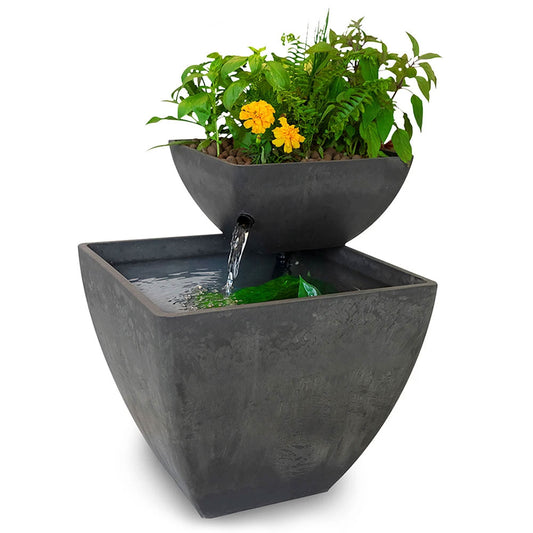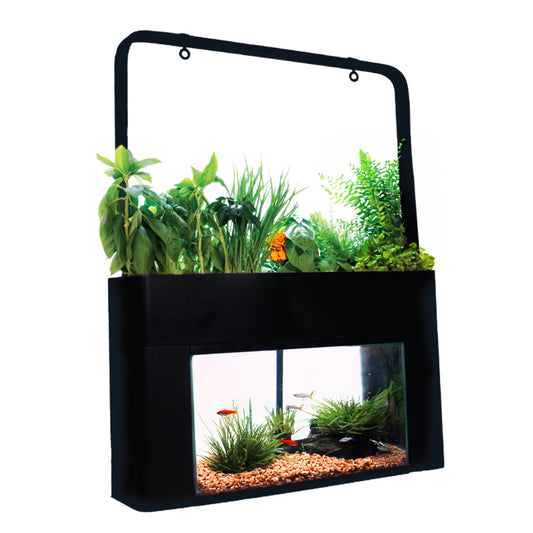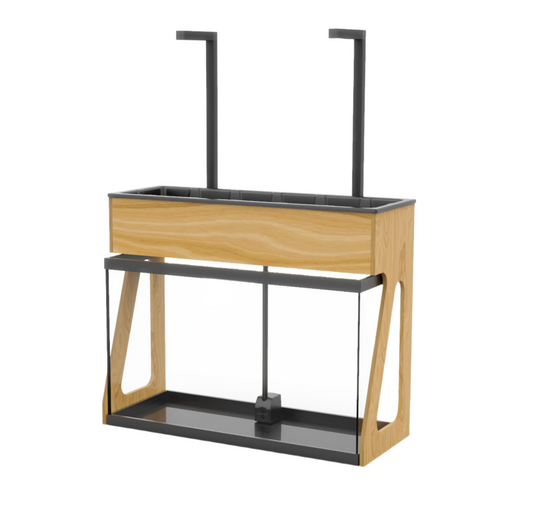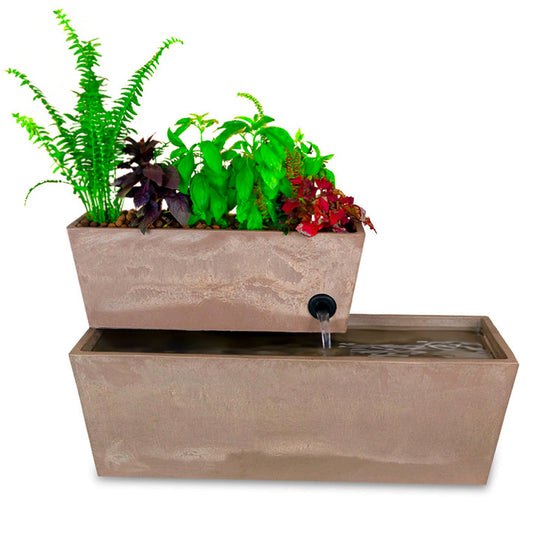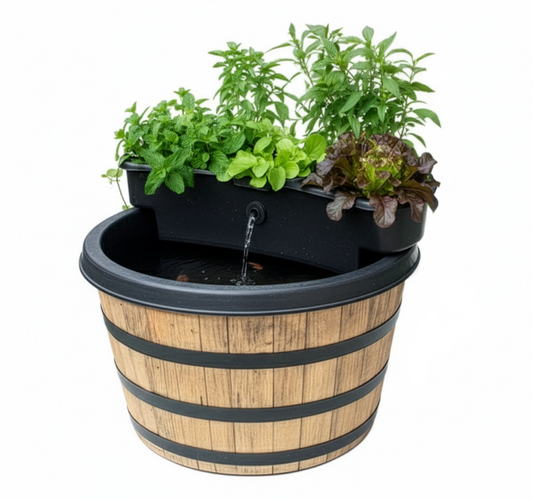Cycling With Fish
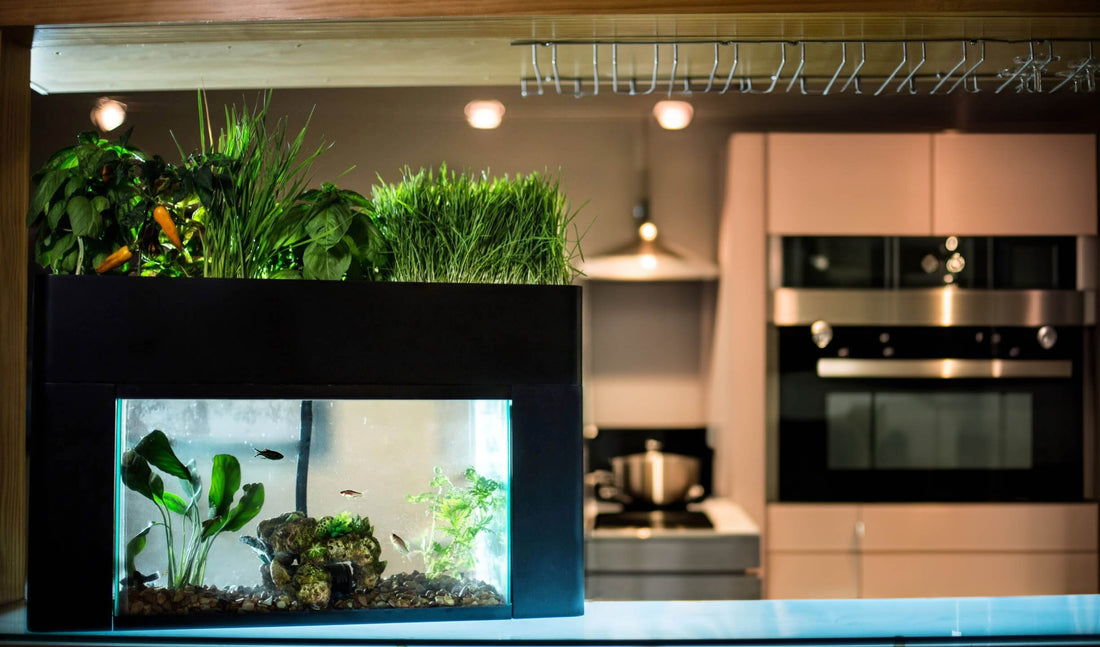

So you got a little excited, and you already have fish in your brand new aquaponic system. Well, you're not alone! While we recommend a break-in period for a new system before adding fish, many people start with fish right away. It's trickier, no doubt, but never fear: with a little diligence and care you can shepherd your new fishy friends through cycling none the worse for wear.
Cycling is a hurdle in starting up any aquaponic system. It can be the subject of a great deal of confusion and worry, since things can go seriously wrong. With the right preparation, though, it's not only manageable, but should be quickly and easily out of the way. Cycling with fish (as opposed to a fishless cycle) seems like the most natural way of starting an aquaponic system, but it’s also the most challenging. Because you’re working with live animals, you'll need to keep a much closer eye on your water chemistry to protect their health, and be prepared to intervene if anything gets out of range.
Getting Ammonia in Check
As soon as you add fish to your tank, ammonia from their wastes will begin to accumulate. Since ammonia buildup is so toxic to fish, it’s important that you monitor it and keep it low. Start by adding only a few fish, feeding them only a small amount once a day; fewer fish and less feed means less waste, and a slower production of ammonia will give you more margin for error on testing and water changes.
Ammonia can change chemical state based on the pH and temperature of the water it's in, and this can affect its toxicity. While it's always best to keep ammonia as low as possible, maximum safe levels can be different under different conditions.
| pH | 68°F (20°C) | 77°F (25°C) |
| 6.5 | 15.4 | 11.1 |
| 7 | 5 | 3.6 |
| 7.5 | 1.6 | 1.2 |
| 8 | 0.5 | 0.4 |
| 8.5 | 0.2 | 0.1 |
| Maximum safe levels of ammonia-N in mg/L (ppm) | ||
This knowledge can help you keep your fish safe in the event of a "spike," a quick, unexpected increase in ammonia concentration. Ammonia spikes often follow overfeeding or fish death; fish wastes produce most of the ammonia in a healthy system, but all organic metabolism produces nitrogen waste, and the decomposition of a large amount of organic matter will release a lot of ammonia in a short time. While a water change is the only way to get ammonia out of a system without a mature biofilter, lowering pH and temperature can help protect your fish in a crisis.
If ammonia levels are dangerous, skip feeding until you've addressed the issue; sick or distressed fish are unlikely to eat much anyway and extra food will only worsen the problem.
After 1-2 weeks, you should begin to notice the presence of nitrite in your water. At the same time, ammonia levels should start to drop on their own. Keep testing both until your cycle is complete, at which time tests should show very little ammonia or nitrite.
Big fluctuations in the water’s pH can put a lot of stress on your fish. Stress makes your fish more vulnerable to a variety of diseases, and a big enough shock can kill them outright. Adjust pH slowly. Try to keep your pH stable within a range of 0.4 points per day, making any major adjustments gradually. While a mature aquaponic system operates best in slightly acidic conditions, while cycling it's a good idea to keep your pH near or slightly above neutral, between 6.8 - 7.4.
Check out our full guide to understanding and managing pH in your system here.
Navigating nitrite
Nitrites are a key step in the cycling process, but they're still quite dangerous for fish. They're also less responsive to surrounding water conditions. Nitrite concentrations of >2 mg/L can be stressful for your fish; >10 mg/L is often lethal. If nitrite levels in your tank are dangerously high, you may again need to perform a 30-50% fresh water change to get them under control.
Speed things up
It can six weeks or more to reach a full cycle in an aquaponic system, but you can help speed things along. Warmer water will cycle more quickly; you can also inoculate your system with healthy bacteria from an existing, fully cycled aquatic environment, like a healthy aquarium or clean pond. Adding biofilter media, water, gravel, decorations, or even the dirty squeezings from the filter of an existing system will introduce a large number of beneficial microbes to your system, dramatically speeding up the cycling process.
Are We There Yet?
When your water testing shows no ammonia and no nitrite despite regular feeding, cycling is complete, and you can start adding more fish to your aquarium. Add fish a few at a time with at least a couple of days in between; your biofilter is now prepared to process fish wastes, but your bacterial populations will need to grow along with your fish stocks, and while it happens much more quickly in a cycled tank, it's still not instantaneous. Adding too many fish at once can still create dangerous ammonia spikes as your biofilter struggles to catch up.
The Final Word is Fish
Always keep an eye on your tank's residents! Testing is important, but there's a lot going on invisibly in your water. Watching your fish for signs of distress can warn you of potential problems before you might otherwise catch them with testing. Do you see any of the following?
- Rapid breathing
- Hiding, shyness, or skittishness
- Faded colors or loss of luster
- Gasping or gulping at the surface
- Ragged fins
- Unusual spots or patches of discoloration, or new growths
- Aggression - excessive chasing, nipping, or charging one another
- "Flashing," rubbing or scratching themselves against gravel or decorations
- Listlessness, loss of interest in food
- Bloating or swelling
- Loss of balance, unusual or incompetent swimming patterns
These are all possible signs of stress or disease, and can be key warnings that something's not right in your water. If your fish are acting unusually, water testing is in order. If everything seems right with your water but the strange behavior doesn't go away, it may be nothing, but a little research on possible causes can help prevent the heartbreak of fish loss.

